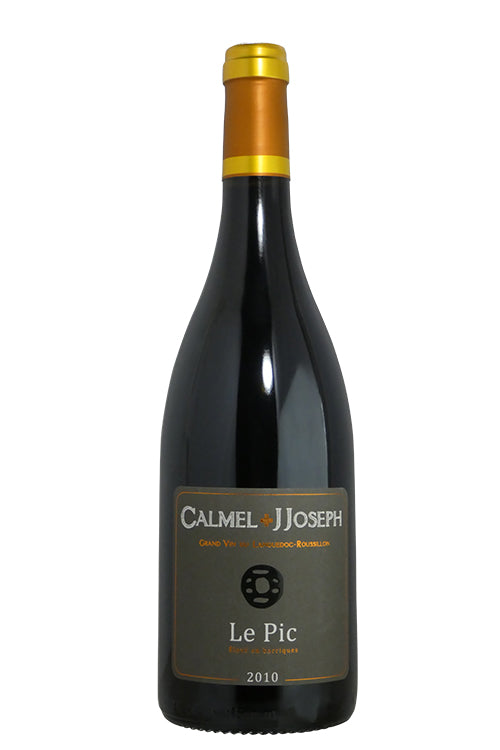1
/
of
1
Calmel & Joseph Le Pic - 2010 (750ml)
Calmel & Joseph Le Pic - 2010 (750ml)
Regular price
$55.99
Sale price
$55.99
Regular price
$69.99
Unit price
/
per
Syrah (40%), Grenache (30%), Mourvèdre (20%) and Carignan (10%) from Biodynamically farmed vineyards. Bottled with only 1g of SO2.
Availability:
6 In Stock
$25 Shipping on Orders +$299
Couldn't load pickup availability
Share :

- varietal
- Region
- Sub - Region
- Type
- Reviews
Includes red wines where there is either no predominant variety or the blend is proprietary.
The Languedoc and Roussillon are two adjoining but distinctly separate wine regions in southern France. The Languedoc consists of two main regions: The Aude, home to the sub-regions of Limoux, Corbieres, Fitou, Minervois, and the Herault, which includes Picpoul de Pinet and the vin doux naturels producing regions of Banyuls, Frontignan, Lunel and Mireval.
St. Emilion is the largest of Bordeaux’s right bank appellations, however unlike the grand estates of the Medoc, it is composed of hundreds of small producers, also referred to as garagistes. Merlot and Cabernet Franc dominate with the former accounting for about 60% of all plantings. Some Cabernet Sauvignon is grown, however careful site selection is important as the soils are generally too warm. While the Medoc (left bank) was ranked under the official 1855 classification, it wasn’t for another hundred years until the St. Emilion rolled its own. Where the 1855 classification has only been changed three times, St. Emilion’s, by comparison, is far more dynamic, with a new list drawn up everything ten years. However, as the 2006 classification demonstrated, changes, particularly when producers are demoted, are fiercly contest. Finally passed by the legislature in 2009, the classification comprised of 15 Premier Grand Crus classes and 53 Grands crus classes. The Premiers are broken down further into two groups classes A and B, with Châtea Ausone and Châtea Cheval Blanc in the former and the remaining 13, including such revered producers as Château Angélus, Château Pavie, and Château Figeac, in the latter.
Red wine is wine made from dark-coloured grape varieties. The color of red differs based on the grapes variety or varieties used.Interestingly, black grapes yield a juice that is greenish-white. The actual red color comes from anthocyan pigments (also called anthocyanins) from the skin of the grape (exceptions are the relatively uncommon teinturier varieties, which produce a red colored juice). Most of the production centers around the extraction of color and flavor from the grape skin.


